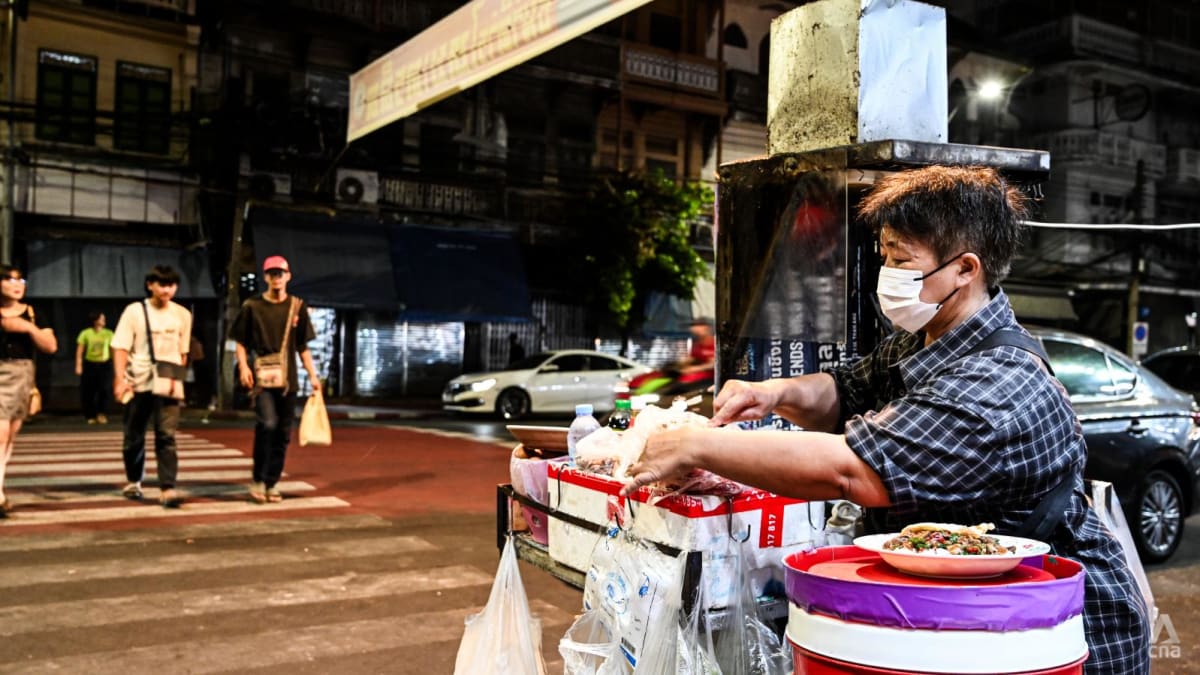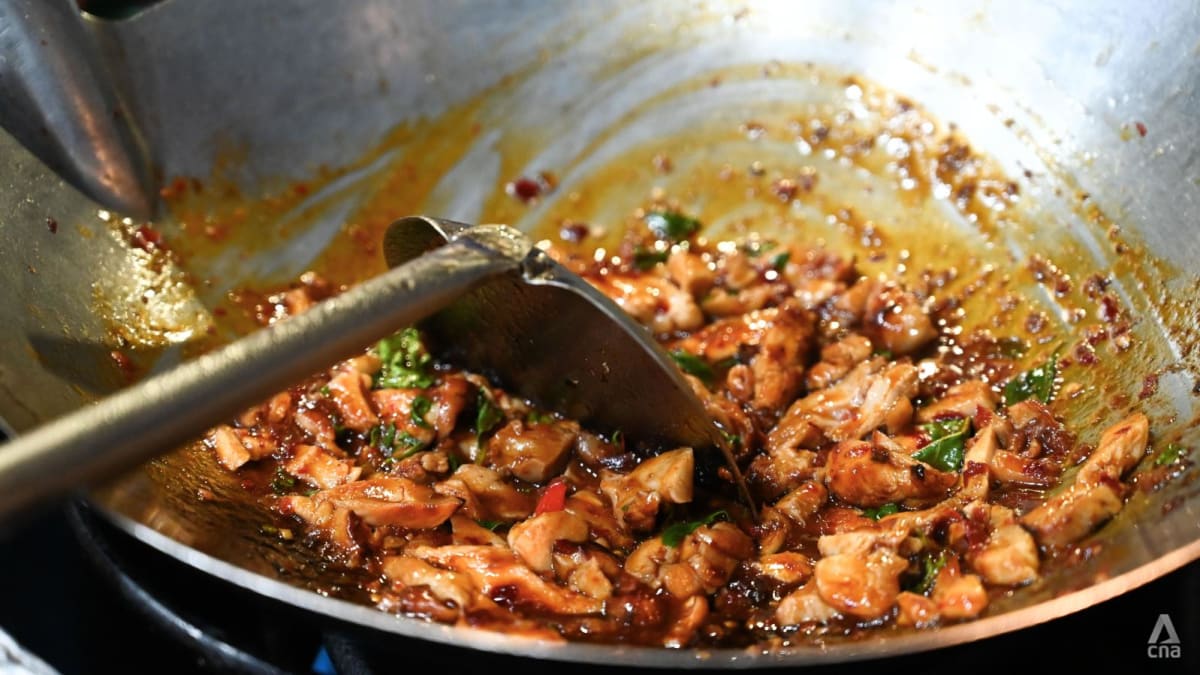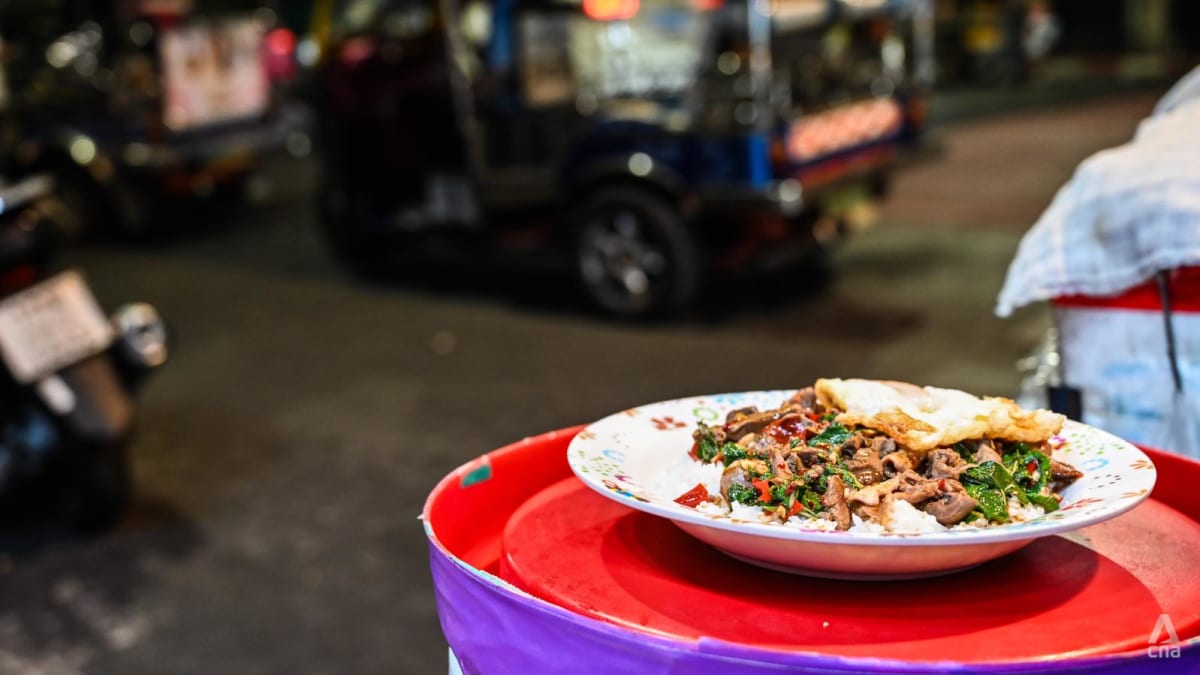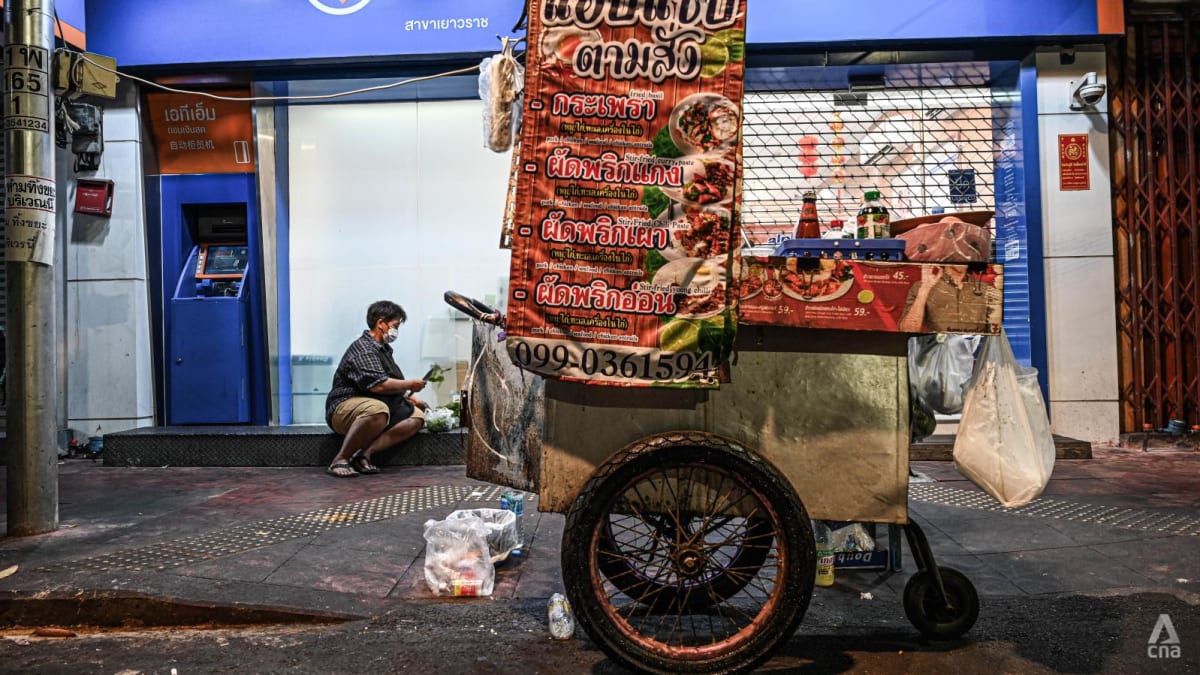Will Bangkok's move to Singapore-style hawker centres kill the city's street food scene?
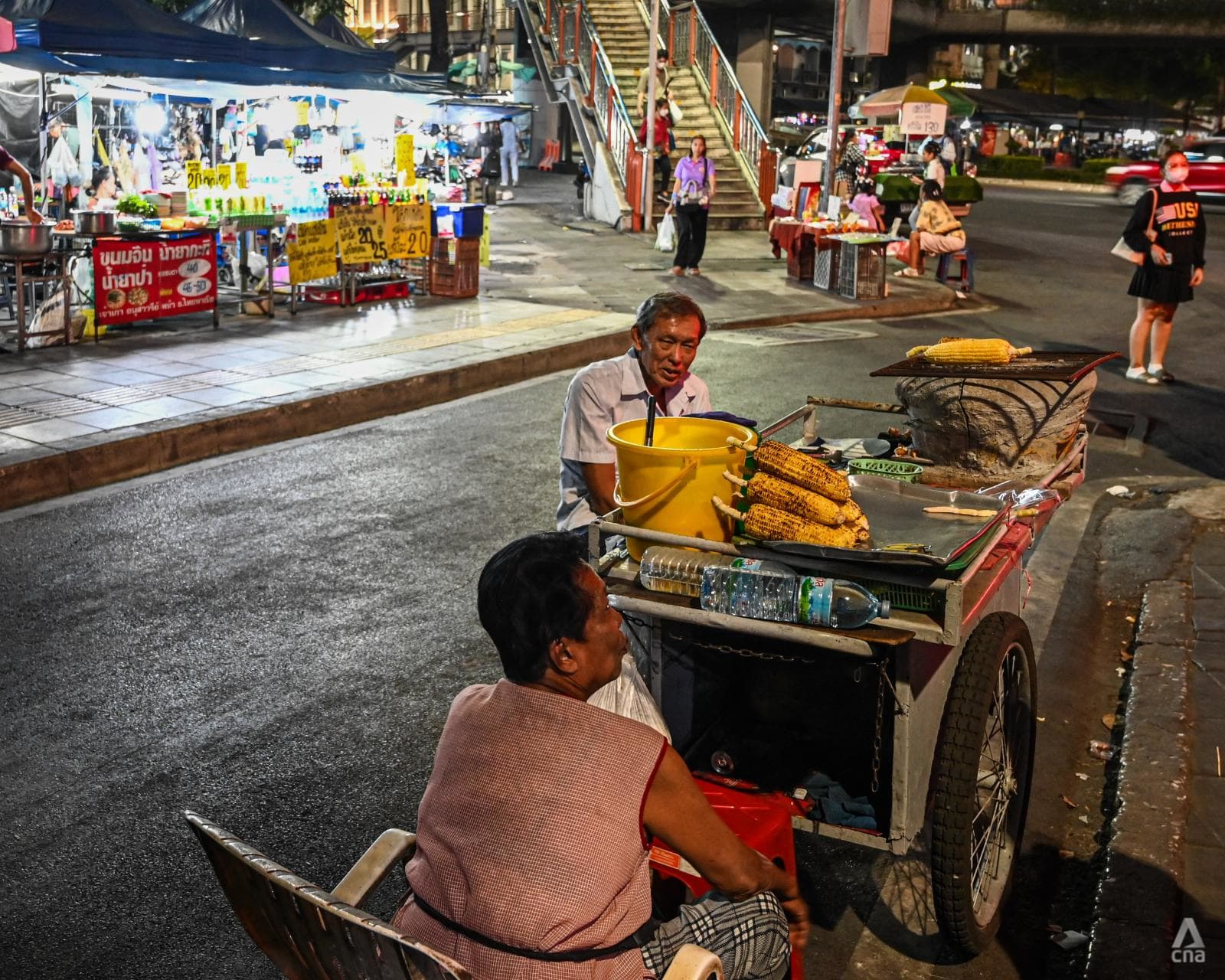
Ms Nampueng Thong-auam (back facing camera) and Mr Somjai Bangsuwannarat tending to their food cart by the Victory Monument in Bangkok, Thailand. (Photo: CNA/Jack Board)
Ms Nampueng Thong-auam and Mr Somjai Bangsuwannarat have witnessed history on many occasions from their vantage spot in central Bangkok, Thailand.
For four decades, the couple have run a food cart selling grilled corn, right by a major city landmark known as Victory Monument, the site of several protests over the years.
The monument, erected in 1941, commemorates Thai loss of life during a border skirmish with the French when that nation was in control of Cambodia and Laos, as well as Vietnam.
For 40 baht (US$1.20 or S$1.60), they offer you a delicious corn cob that has been lathered in coconut milk, salt and palm sugar and grilled over charcoal.
The couple, who are both in their 70s, told CNA TODAY that they do not make much money, just enough to cover their daily expenses.
“We are tired but we will keep doing this until we can’t do it anymore,” Ms Nampueng said.
At their age, they are mostly unbothered by the authorities' increasing efforts to clean up the streets, but across the city, street food vendors are facing more challenges to keep their culinary art alive.
This weekend, In Pixels looks at the internationally acclaimed street food scene in the Thai capital and how efforts to tidy up Bangkok, as well as economic challenges, have affected the livelihood of the vendors.
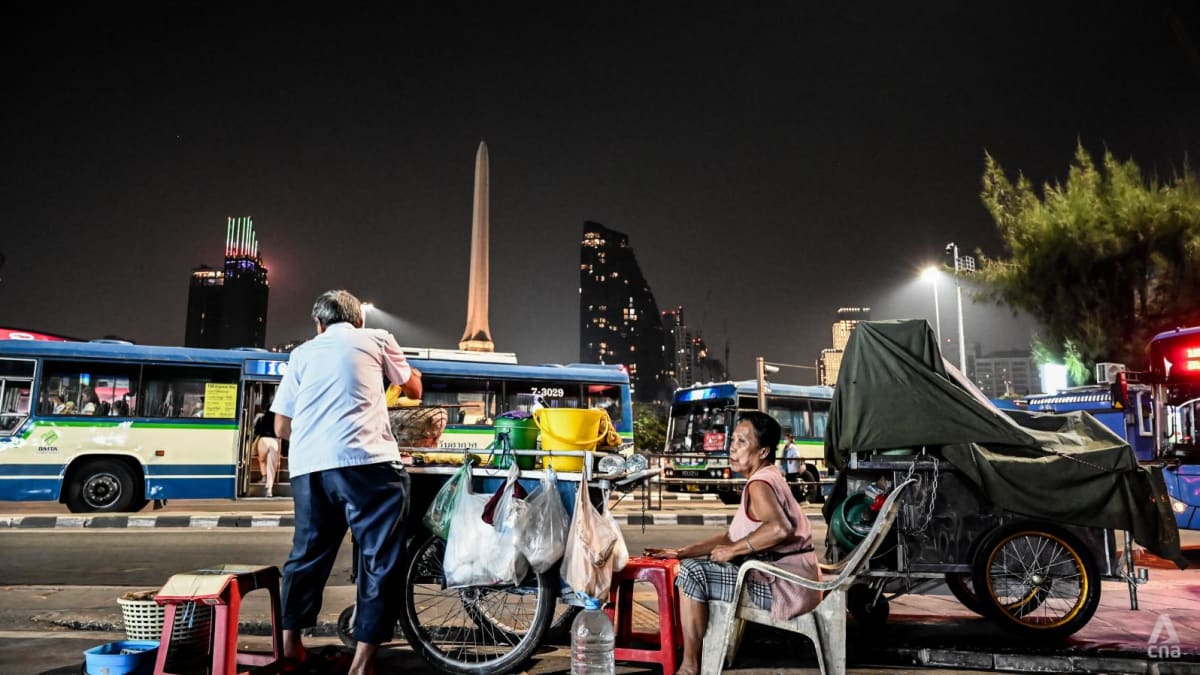

ICONIC PART OF BANGKOK LIFE
Street food sellers such as Ms Nampueng and Mr Somjai are scattered all across the Thai capital.
For generations, these sellers have created a unique culinary scene in the city and many tourists flock to Bangkok for its famous street food.
In recent years, though, the government has stepped up efforts to promote orderliness, improve food safety and cleanliness standards and to support low-income Thais.
Last year, the Bangkok Metropolitan Administration introduced new rules to limit the number of street food vendors across the capital.
Vendors are allowed to set up stalls only in designated areas and only Thai citizens on welfare are allowed to take on this work.
Plans are in the works to tighten the rules further, to only allow those with an annual income under 300,000 baht (about S$11,900) to do the job.
The spaces that the sellers are allowed to use now are also tightly managed.
They are not allowed to set up shop in ways that would block pedestrian areas and must keep their space to a maximum of three square metres.
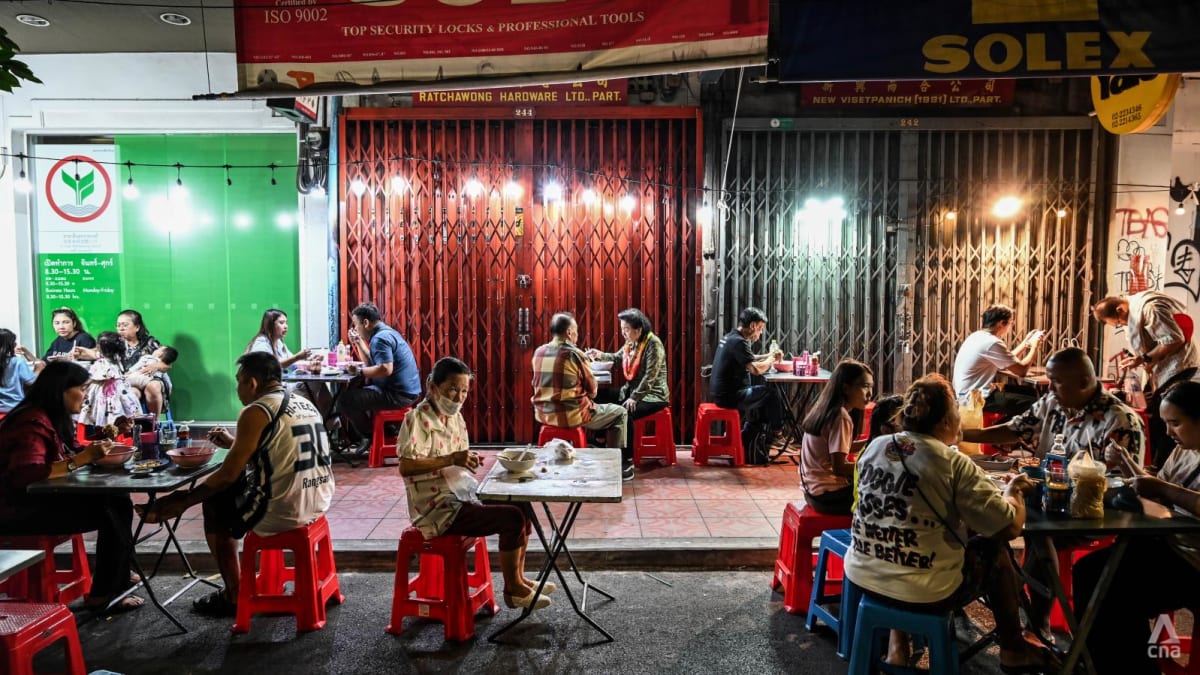
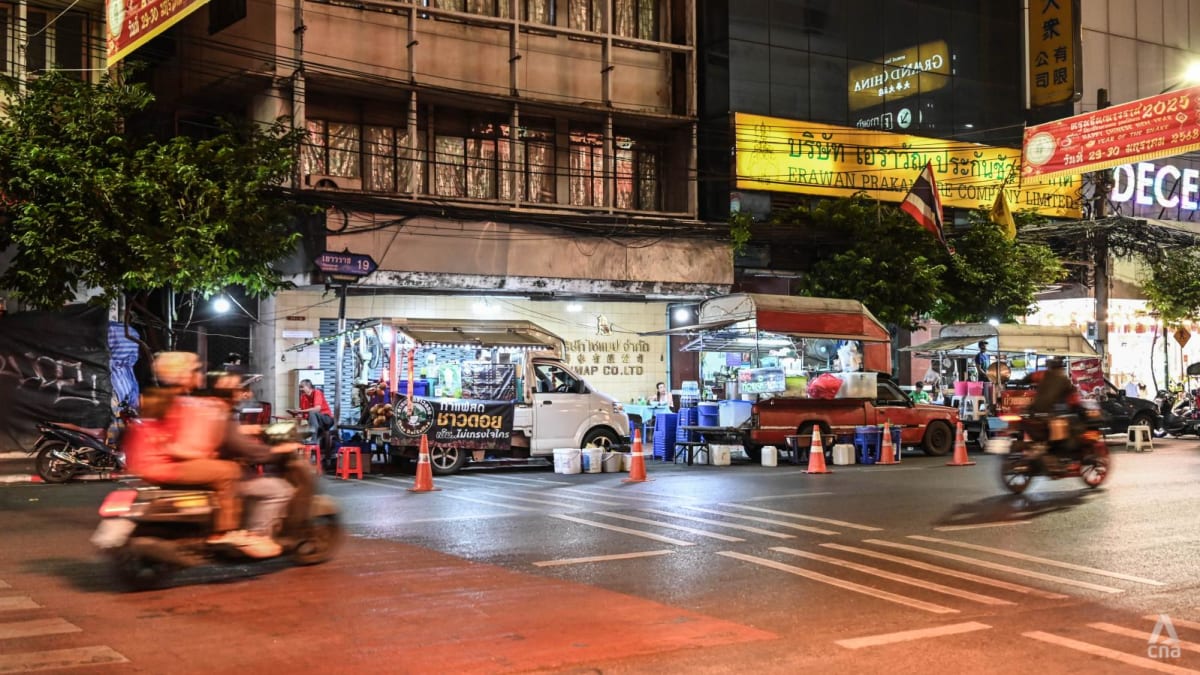
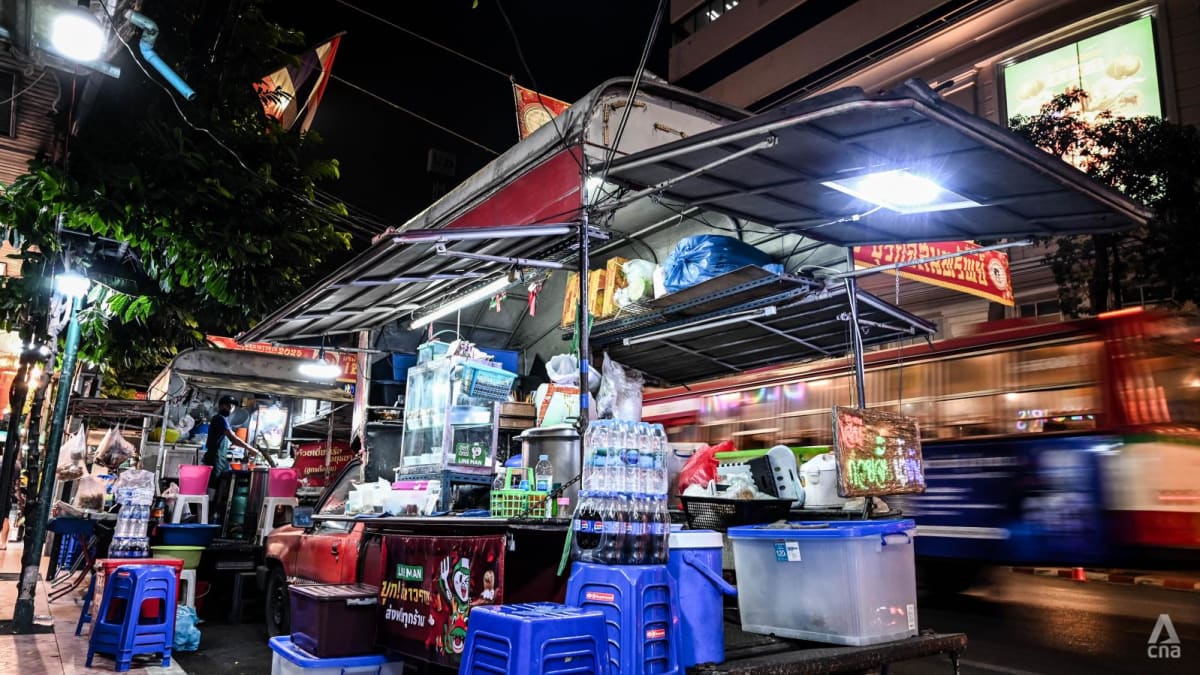
Bangkok governor Chadchart Sittipunt said in October 2024 that over the past two years, about 10,000 vendors have been removed from the streets.
Eventually the Bangkok Metropolitan Administration wants to develop more Singapore-style hawker centres, to give sellers cleaner, more managed spaces from which to operate and ideally, for these new food centres to become hot spots for tourists to visit.
"BARELY MAKING A LIVING"
However, even without the new rules to "clean up" the street food scene, several vendors said that it has been increasingly difficult to make a living over the past few years.
Ms Ponthip Janjamsri has been selling fried meat balls for four decades near Victory Monument.
Most of her customers are teenagers, who pick up the skewers for just 10 baht each.
The 60-year-old said that she earns only about 500 baht each day, barely enough to support her family.
She now makes about a fifth of what she did when times were better in decades past.
“This is just day-to-day survival. If I don’t do this, I’ll have nothing left. The economy is not good and politics are not stable.”
And for senior food vendors such as Ms Ponthip, moving to a new centralised location just seems "unrealistic".
“I’m old so they (the authorities) let me stay here.”


AN UNCERTAIN FUTURE FOR EVERYONE
It is not just the older vendors who are feeling the heat.
Younger stall owners, inlcuding Mr Apichai Rawangphai, are also uncertain about the future of the street food scene in the city.
The 42-year-old school teacher and his wife run a stall in the old part of Bangkok that includes the Grand Palace, to help supplement their income.
Originally from Buriram province in Thailand's northeast, Mr Apichai said that he started the stall barely two years ago when his wife lost her job.
Together, they whip up comfort dishes from northeast Thailand, such as laab (minced meat salad) and tom saep nuea (spicy and sour soup).
They have a modest set-up, offering just one table that is usually taken by police officers who work in the vicinity or residents finishing work.
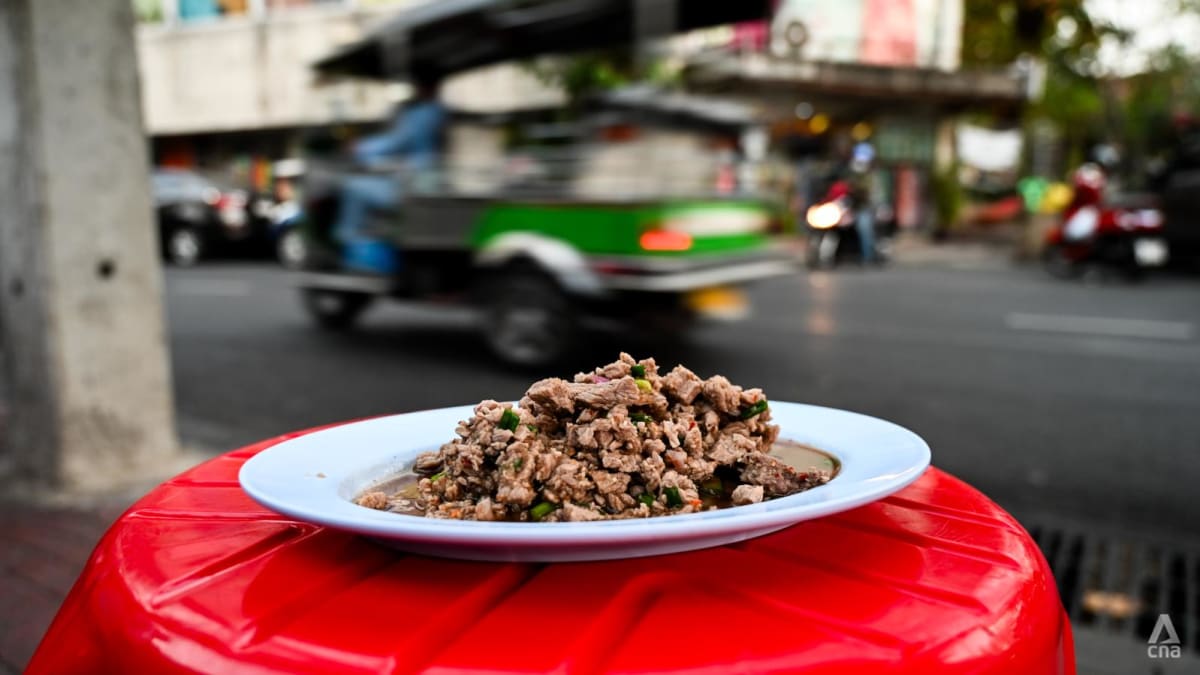
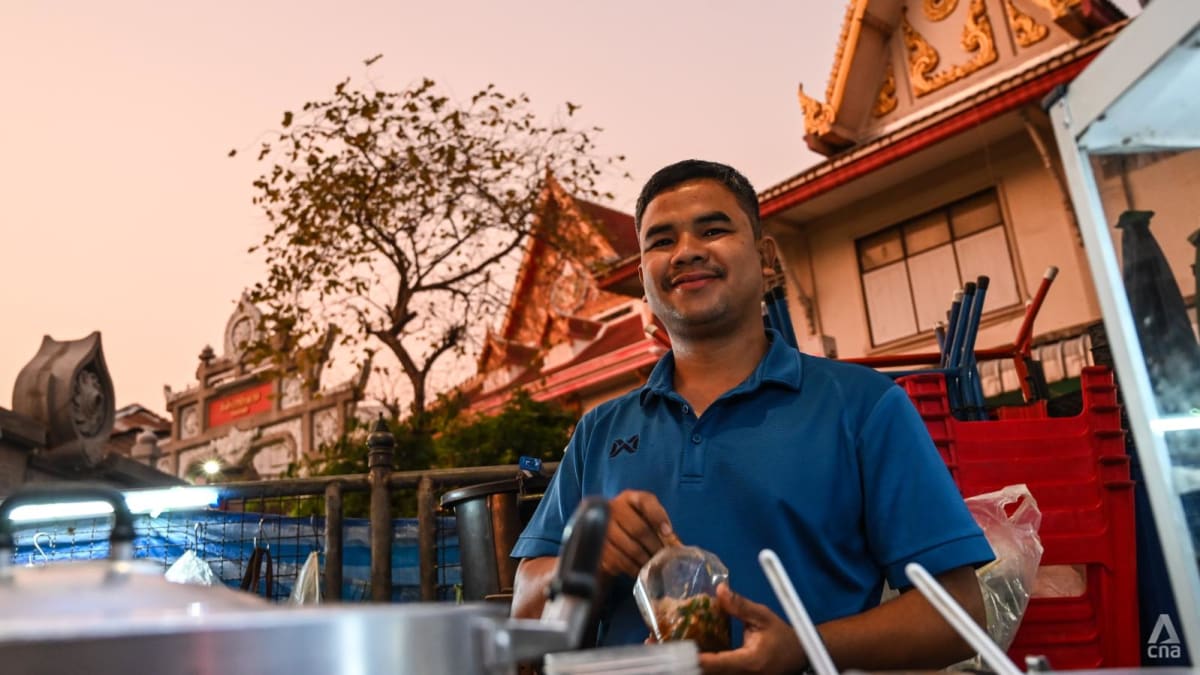
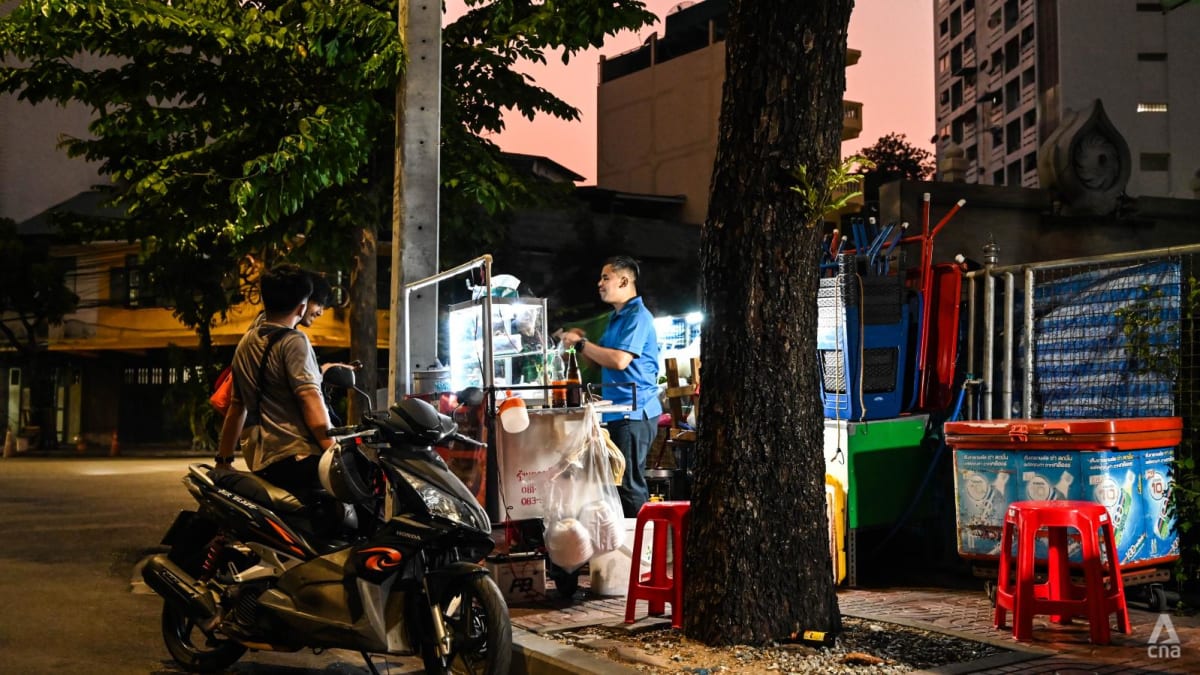
"EVERYONE NEEDS TO EAT"
In the vicinity of Yaowarat Road in Bangkok’s Chinatown where tourists line the neon-lit streets, street food sellers seem a little less worried about their future.
For more than 10 years in this spot. Ms Amornrat Suwan-ngam, 58, has been selling one of Thailand’s quintessential dishes known as pad krapow, a meat stir-fry dish with holy basil.
Ms Amornrat admitted, however, that it has been challenging to make a decent living for the past three years due to the state of the economy.
Still, she has no plans to move her stall anytime soon because there are no real alternatives. Finding other types of work, at her age, would also be difficult.
“I can still get money every day from cooking food. Besides, everyone needs to eat.”
